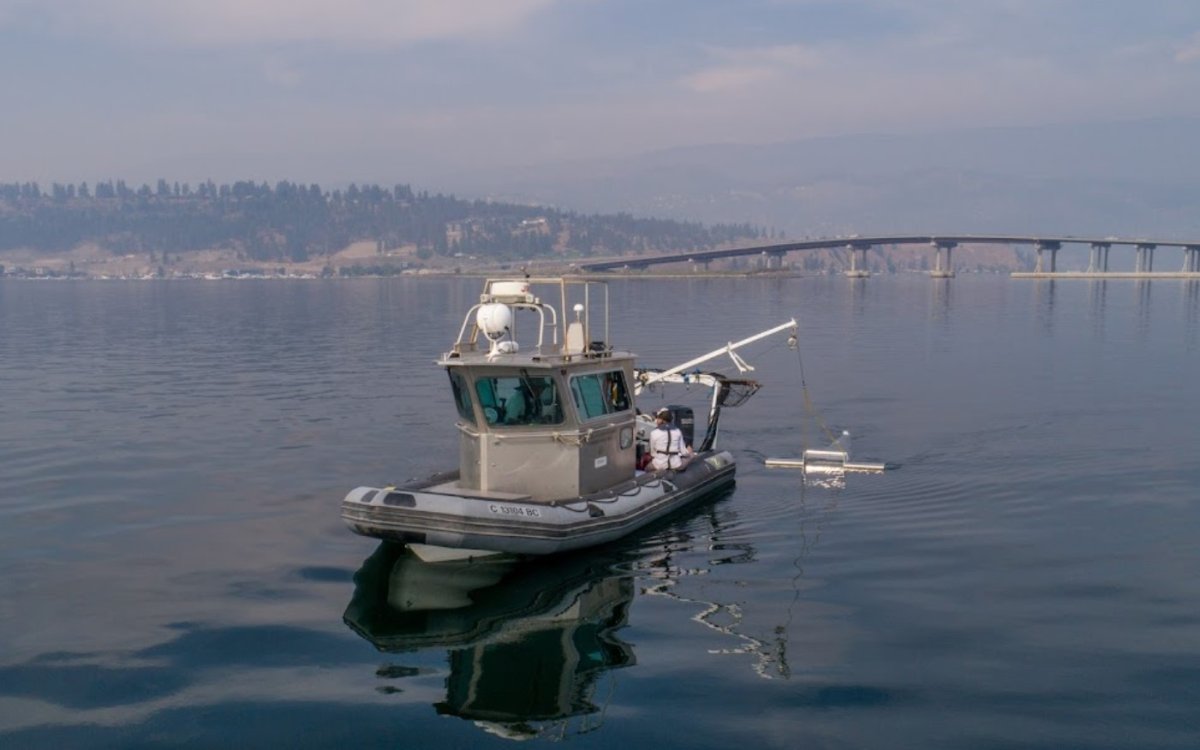Microplastics have infiltrated Okanagan Lake though it may not be too late to mitigate the damage, researchers have found.

Samples were taken in the fall from north and south of the W.R. Bennett Bridge, near the outflow of Kelowna’s wastewater treatment facility, around the mouth of Mission Creek, further south of the creek as well as wastewater samples from the City of Kelowna’s treatment facility itself.
Eight students and professors from Okanagan College’s Water Engineering Technology Diploma program worked with a team of researchers to analyze the samples from the lake and Kelowna’s wastewater treatment facility.
Initial results confirm that microplastics, which are less than five millimetres in diameter, are present in both water sources.

“Our work involved isolating, verifying and measuring microplastics from the samples provided,” Joshua Sztanko was one of the Okanagan College students who worked on the project said in a press release. “This was a phenomenal capstone project in that it offered a real-world learning opportunity with microplastics and the chance to contribute to a study that has an impact right here in the Okanagan where we live.”
Erin Radomske, OC WET Professor, said the report showed there were small differences between the five sample sites.

Get daily National news
“These were very small – on the order of grams per site,” Radomske said. “The research showed us that the techniques employed are effective for detecting microplastics on the surface and that yes, sadly, microplastics are present on the surface, although not in huge abundance.”

Concentrations of microplastics appear to be low, relative to other, similar studies that have been conducted in the Great Lakes, and low as compared to similar studies in the marine environment.
“We are talking about teaspoons of plastic over 30,000 litres of water,” Radomske said. “However, these findings remind us that people should continue to be mindful of their behaviours as it relates to plastics. Microplastics came from larger pieces of plastic: bags, bottles, fibres. That little bit of plastic that flies off the boat or falls in the creek, breaks down and can accumulate. We all need to be mindful of our own choices and influences.”
Okanagan Basin Water Board (OBWB) executive director Anna Warwick Sears said the collaboration was impressive.
“Their initial findings are troubling but perhaps not unexpected,” Sears said.
“Plastic seems to have permeated all our lives. By putting a spotlight on the issue, we hope people will be encouraged to help protect Okanagan waters – the source of our drinking water and for all living things.”
While additional sampling is planned, the preliminary results indicate that there is a window of opportunity to assess ongoing point sources and minimize further inputs of plastics into the lake. There are many actions individuals can take to prevent microplastics from entering our freshwater ecosystems, including:
- Get involved in, or organize, a local beach, stream, or neighbourhood cleanup, to remove plastics and other trash from entering storm drains or waterways.
- Remember to pack out what you pack in when visiting a beach, hiking, or camping.
- Limit your use of single-use disposable plastics.
- Consider your garment choices: synthetic clothing sheds microplastic fibres each time you wash them; transition to cotton or other natural fibres.
- Install or invest in microplastic-capturing devices for your laundry machine.
Partners on the project include OBWB (grant funding) and Okanagan WaterWise, OC’s WET Program, Okanagan Nation Alliance, Fresh Outlook Foundation, and the Institute for Underwater Research, with collaboration from the City of Kelowna Wastewater Treatment Facility.
The future plan is to produce a documentary as fundraising allows, highlighting the impacts of plastic pollution and how people can help keep Okanagan waters plastic-free.
Watch the trailer by clicking here.








Comments